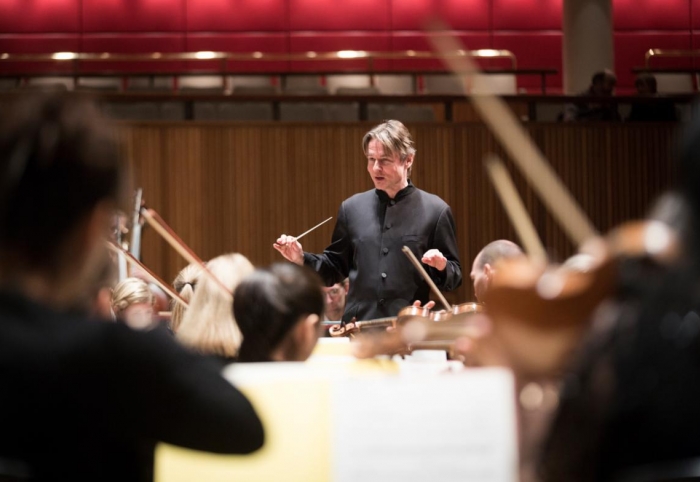
STRAVINSKY REVISITED IN BERKELEY
BERKELEY—Esa-Pekka Salonen brought his Philharmonia Orchestra from London to Zellerbach Hall to do a two-program tribute to Stravinsky, recalling the 1968 opening ceremonies of the same site.
The 2,000-seat hall is a major site, filling a big yawning void at the University of California for nearly half a century.
The Londoners are supreme performers. As one colleague noted after “The Rite of Spring,” the muted horns played so softly, so subtly, it was as if they were offstage. Overall however, the tradition-breaking “Rite” came off exuberantly, ebulliently, with a wild streak on the bass drum and paired timpani prominently heard in the back row of players. This piece which revolutionized the course of music in 1913 and set off the biggest concert-hall riot at the premiere, is one of 4-5 different personae that the versatile Stravinsky adopted during his long composing career. He was such a commanding force in musical invention that I think he is forgiven for borrowing, unacknowledged, at least five of the “Rite” themes from an old Lithuanian folk-song book assembled and issued by Antanas Juska, a Lithuanian priest and folklorist. Stravinsky was ever the precise rhythmic master coming out of the ballet, rather than a source of abundant memorable themes.
Given the visceral nature of “The Rite,” its furious fusillades, the primitive society depicted in the ballet, and the human sacrifice at the end, is it any wonder that the elegant Parisians were infuriated by the opus?
Salonen, the handsome dashing Finn who had given up the plum job of directing the L.A. Philharmonic to devote more of his life to composing, is a top-line conductor, leading all the complex metric changes of Stravinsky unerringly and instantaneously, even if you can never really judge whether the beat comes on the upswing or downswing of the baton. (Fear not, his musicians can.) He and his players roused the crowd Oct. 8 to wild enthusiasm, and they remained audibly energized even as they filed out of the hall into the night.
For those few of us lucky enough to be around at the 1968 hall’s opening, on Oct. 9 the Londoners recreated that very repertory, with the composer then sitting down front (His delicate health and age, in his late 80s, prevented his conducting that night.) The great diversity of the composer was emphasized with the “Symphony of Psalms”—No violins or violas! Deliberately misplaced syllable accents! Revived Latin rarities! Two pianos!—-and his “Oedipus Rex” opera-oratorio, also in Latin, with narration.
I’ve heard the latter work with four different ensembles, and this was the most dramatic and compelling performance of all. The exceptional spinto tenor Nicholas Phan played the title role with a ringing voice and a touching persona, embodying the tragic end of this king who blinds himself on discovering himself married to his mother. Another American artist, mezzo-soprano Michelle DeYoung, played Oedipus’ spouse-mother Jocasta with secure hall-ringing sound and inner fire.
The concerts also contained the jaunty, aphoristic Symphonies of Wind Instruments, less than 10 minutes long, and his late ballet “Agon” (1953-57) marking his entry into the ultra-complex sonic world of 12-tone composition.
For more information, visit the Philharmonia Orchestra of London events page.